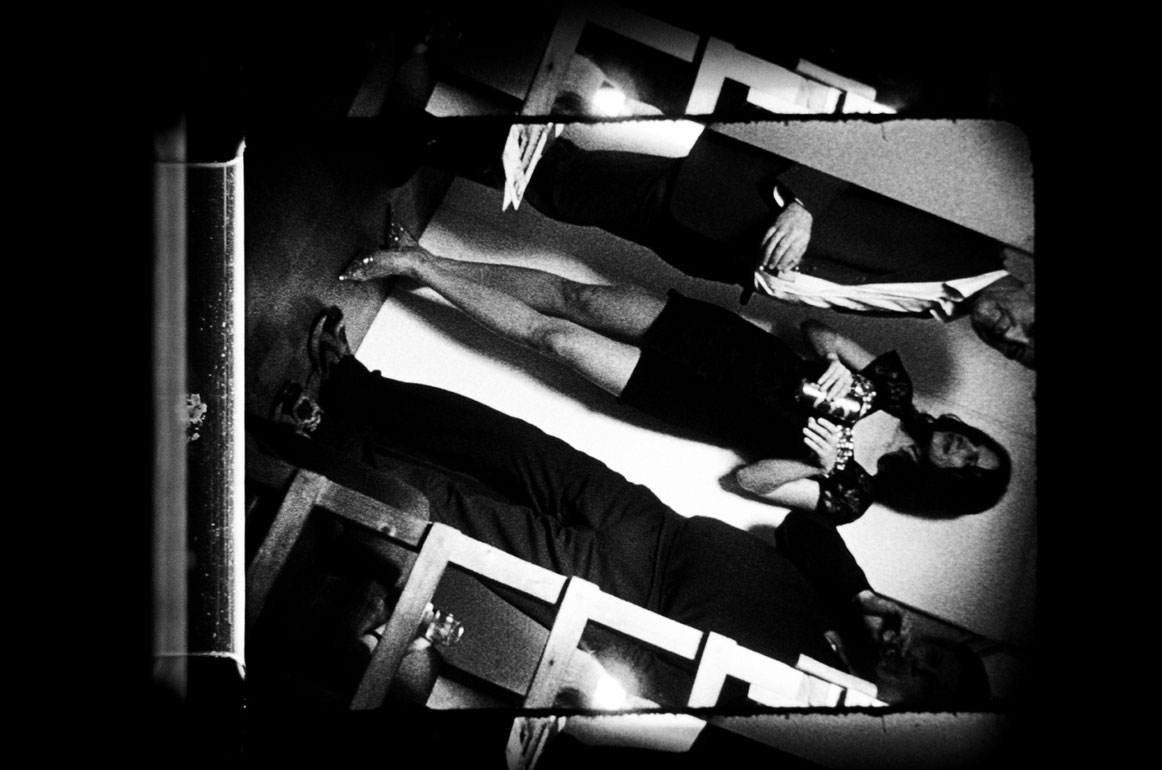People on Sunday
In People on Sunday we see a group of people in a room eating pizza, drinking, conversing, perhaps having a party. The room is small, denying a sweeping view. Pizza is cut and distributed to the guests – and the camera cuts the room and everything in it, all that moves in it, into handy little pieces. Outside the sun is shining and throws cones of light onto the bodies and faces. Here and there a smile slips by. Hands fly around in front of the windows. A T-shirt pushes in front of the projection of a double portrait; fresh air is let in and the portrait appears on a belly, pierced at the navel.
Then the rhythm changes a bit, and everything slows down. The perspective tilts. Again we see cutting and passing out of pizza, which is accepted deliberately, almost ritually. The shades are let down. In the middle of the faces all at once a pair of boots appears; someone is sitting up above, in front of a ladder. The image is upside down. A white leg, a black shoe; the hand of a man enters the picture and unties the laces. The woman comes down from the ladder. Her dress – with a corset – and her hair enter the picture from the lower edge. At the end stands a poster of Peter Kubelka in front of his “Arnulf Rainer” film frame plan.
Friedl vom Göller began working on People on Sunday in 2006. It is first the edit by Jackie Raynal, who also brings fluidity to the transitions, that makes it possible for the artist to complete the film. The camera is extremely mobile, as we have seldom seen in her films. People on Sunday is not a portrait and also does not portray the reactions of people; it is much more a kind of exercise in moving the moving picture. It does this by breaking up the room and the bodies. The parts are those of a dynamic puzzle. They are enough by themselves and they enjoy the absence of the whole, which in any case can be created in the mind of the viewer.
(Sylvia Szely)
Translation: Charlotte Eckler

